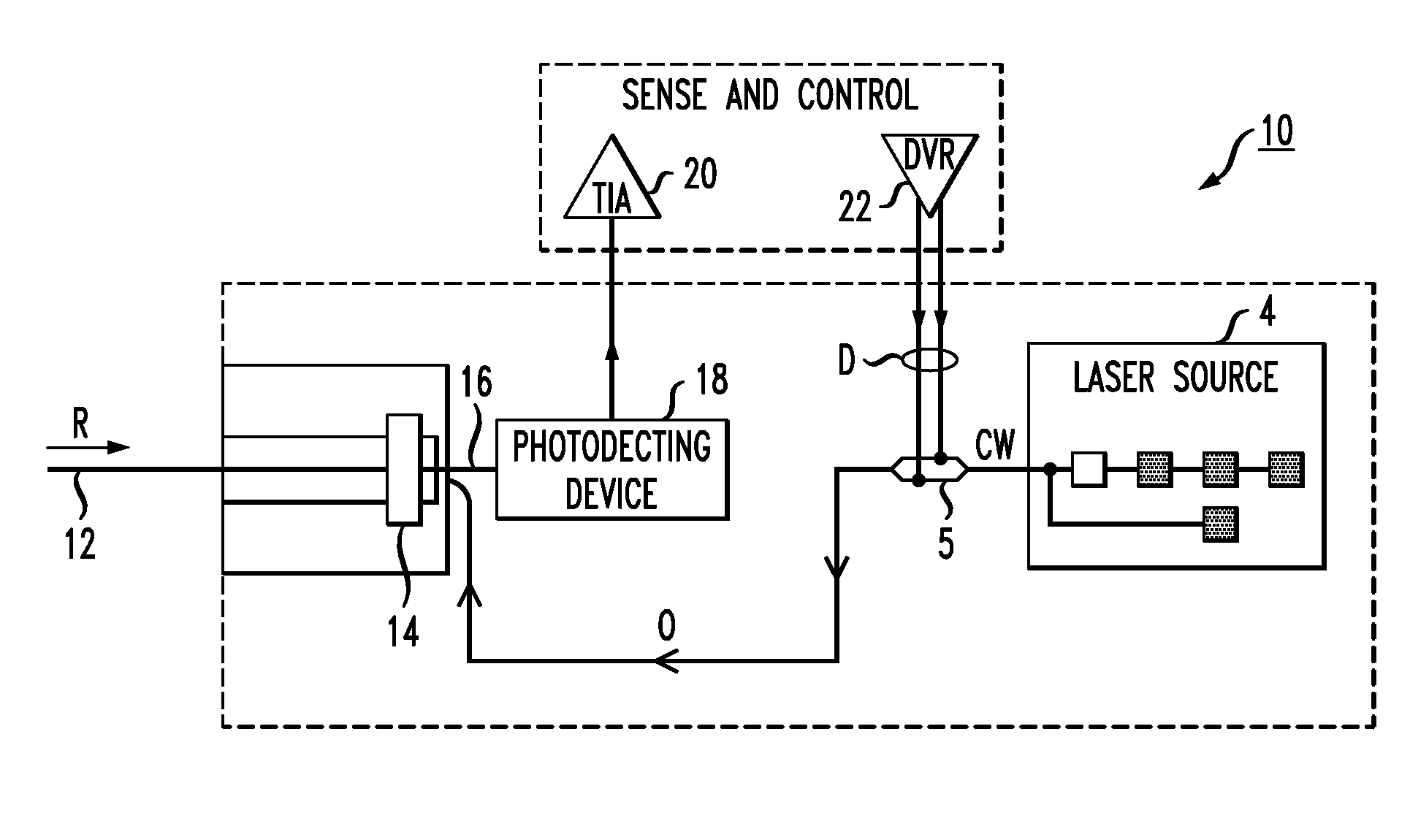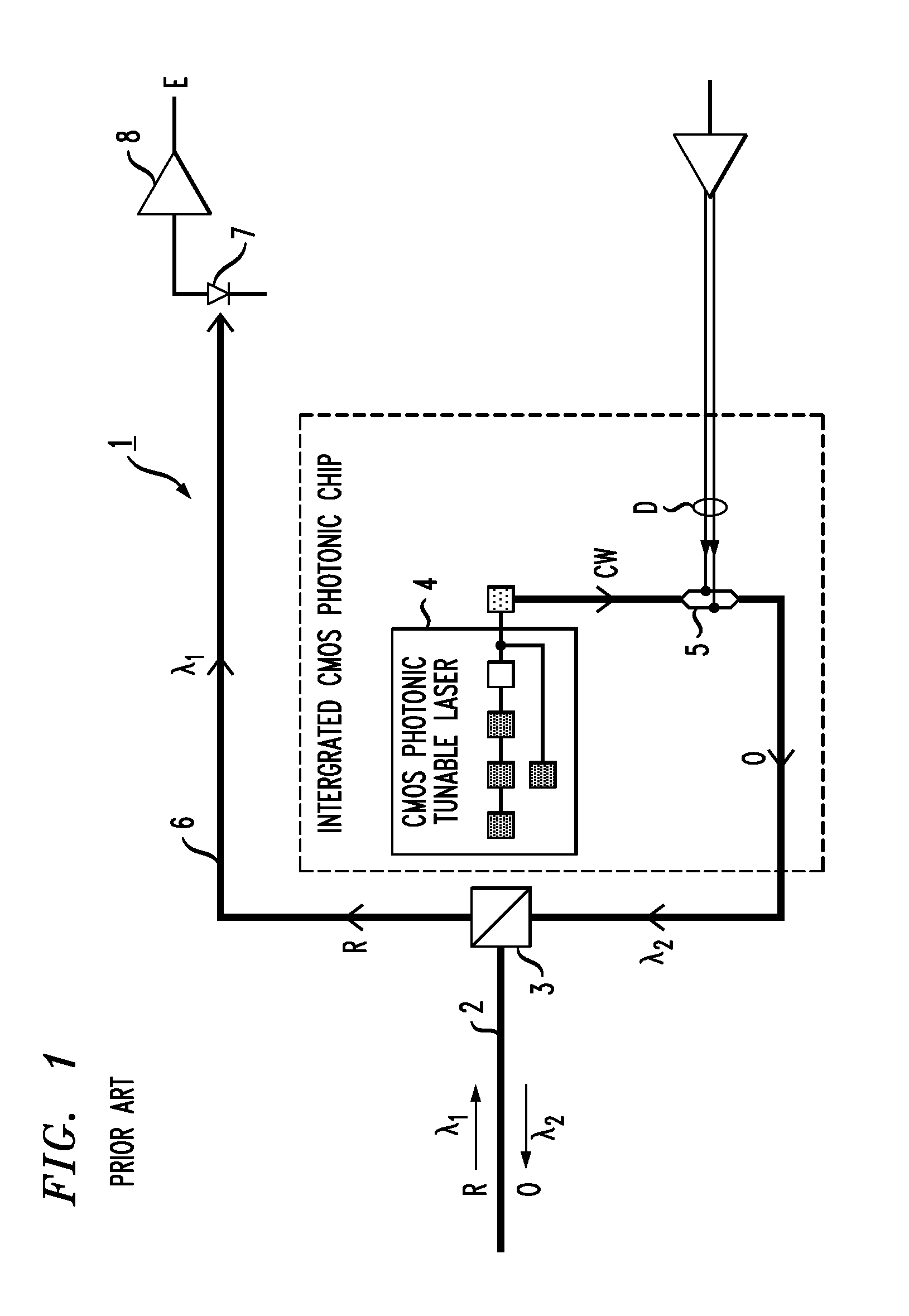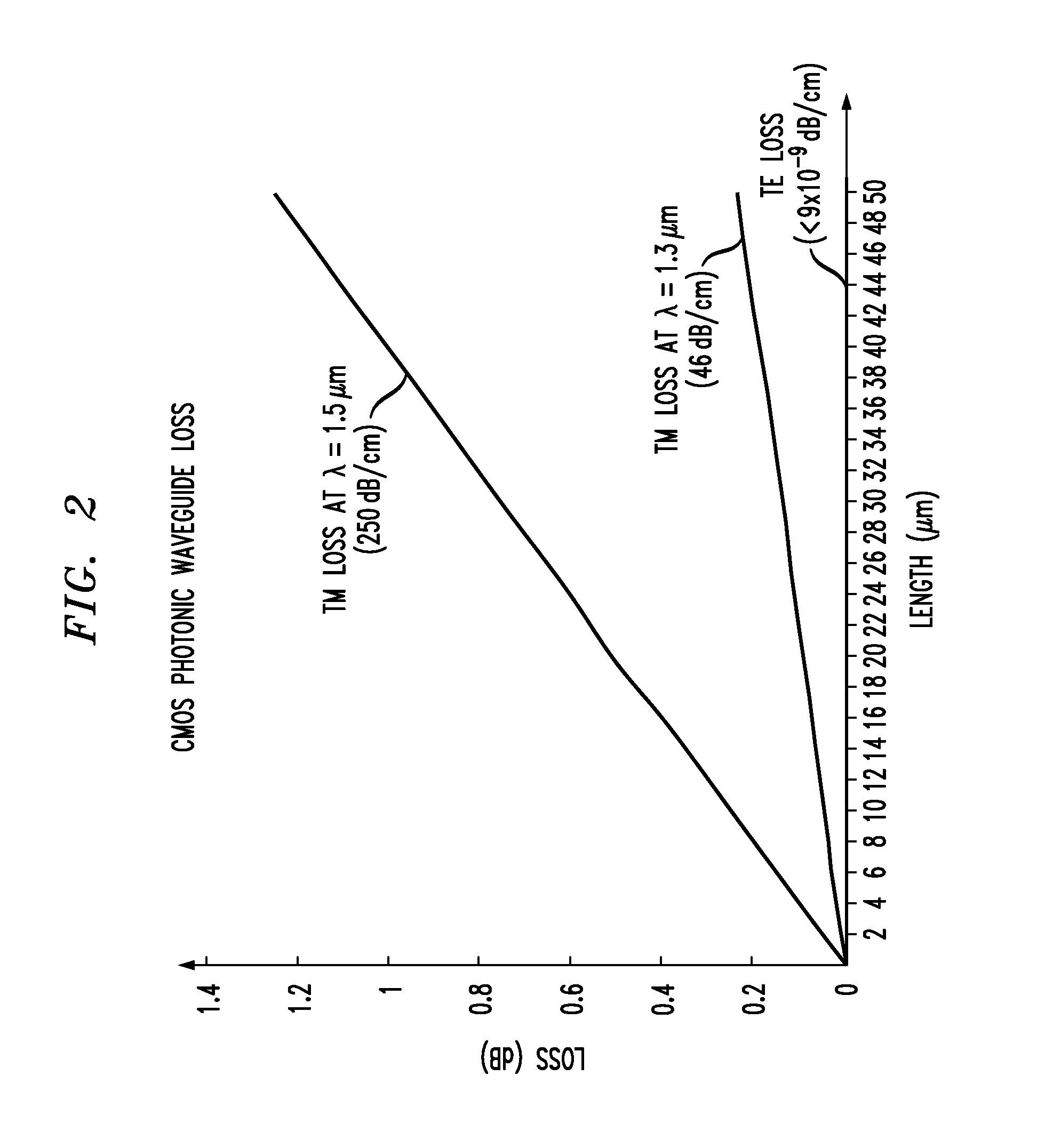Silicon-Based Opto-Electronic Integrated Circuit With Reduced Polarization Dependent Loss
- Summary
- Abstract
- Description
- Claims
- Application Information
AI Technical Summary
Benefits of technology
Problems solved by technology
Method used
Image
Examples
Embodiment Construction
[0018]FIG. 1 illustrates an exemplary prior art opto-electronic integrated circuit 1, utilizing a single incoming optical waveguide 2 (at times, an optical fiber) to transmit optical signals between opto-electronic integrated circuit 1 and other, external components (not shown). In this particular configuration, a wavelength division multiplexer (WDM) 3 is used to separate the “incoming” / received optical signals R (operating at a first wavelength λ1) from the “outgoing” / transmitted optical signals 0 (operating at a second wavelength λ2). Opto-electronic integrated circuit 1 comprises a silicon-on-insulator (SOI)-based circuit, utilizing a silicon substrate as the platform upon which the individual components are mounted and a relatively thin (i.e., less than one micron in thickness) silicon surface layer within which optical waveguides are formed.
[0019]In a conventional manner, and not particularly relevant to the subject matter of the present invention, a tunable laser source 4 is ...
PUM
 Login to View More
Login to View More Abstract
Description
Claims
Application Information
 Login to View More
Login to View More - R&D
- Intellectual Property
- Life Sciences
- Materials
- Tech Scout
- Unparalleled Data Quality
- Higher Quality Content
- 60% Fewer Hallucinations
Browse by: Latest US Patents, China's latest patents, Technical Efficacy Thesaurus, Application Domain, Technology Topic, Popular Technical Reports.
© 2025 PatSnap. All rights reserved.Legal|Privacy policy|Modern Slavery Act Transparency Statement|Sitemap|About US| Contact US: help@patsnap.com



